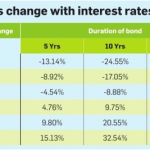
The total value of all assets less the total value of all liabilities gives your net worth or equity. It can use how can a company with a net loss show a positive cash flow an asset to purchase and a new one (spend cash for something else). It can also take out a loan for a new purchase (take out a mortgage to purchase a building). Lastly, it can take money from the owners for a purchase (sell stock to raise cash for an expansion).
Statement of Financial Position: Definition
The articles and research support materials available on this site are educational and are not intended to be investment or tax advice. All such information is provided solely for convenience purposes only and all users thereof should be guided accordingly. The ebitda definition total decrease in cash, cash equivalents, and restricted cash was $3,860,000. The total ending balance was $35,929,000 after deducting the said decrease from its beginning balance.
What is the statement of financial position?

Assets are on the top of a balance sheet, and below them are the company’s liabilities, and below that is shareholders’ equity. A balance sheet is also always in balance, where the value of the assets equals the combined value of the liabilities and shareholders’ equity. You can also find detailed discussions of operations for the year, and a full analysis of the industry and marketplace. It’s the amount of money that would be left if all assets were sold and all liabilities paid.
- Accounts receivable are the receivable amount by the entity from its customers as the result of credit sales.
- Amounts due from related parties are required to be present in the balance sheet and need to be disclosed properly in the note to financial statements.
- This indicates the amount of money the company has generated or used from its financing activities.
This definition is true in the sense that this statement is a historical report. This is in contrast with other financial reports like the income statement that presents company activities over a period of time. The statement of financial position only records the company account information on the last day of an accounting period. Financial position is the current balances of the recorded assets, liabilities, and equity accounts of an organization. This information is recorded in the balance sheet, which is one of the financial statements. The financial position of an organization is stated in the balance sheet as of the date noted in the header of the report.
The balance of return earnings could be reduced once the entity makes dividend payments to its shareholders or reinvestment. Short-term liabilities are the liabilities that are expected to be paid within a period less than twelve months from the Balance Sheet date. Accounts receivable are the receivable amount by the entity from its customers as the result of credit sales. This amount is expected to be received in a period of fewer than twelve months from the reporting date or Balance Sheet date. Report the balance of cash and cash equivalence that is to the entity at the reporting date.
How confident are you in your long term financial plan?
They can refer to tangible assets, such as machinery, computers, buildings, and land. Non-current assets also can be intangible assets, such as goodwill, patents, or copyrights. While these assets are not physical in nature, they are often the resources that can make or break a company—the value of a brand name, for instance, should not be underestimated.
This money belongs to the shareholders, who may be private owners or public investors. The long-term section includes all other debts that mature more than a year into the future like mortgages and long-term notes. Investors use this information to compare the company’s current performance with past performance to gauge the growth and health of the business. They also compare this information with other companies’ reports to decide where the opportune place is to invest their money. In this sense, investors and creditors can go back in time to see what the financial position of a company was on a given date by looking at the balance sheet. The statement of financial position is typically prepared quarterly or annually.
It could be cash on hand, petty cash, cash non current liabilities examples deposit in the bank, or other financial note that are equivalent to cash. Liabilities refer to money a company owes to a debtor, such as outstanding payroll expenses, debt payments, rent and utility, bonds payable, and taxes. Evaluating the financial position of a listed company is similar, except investors need to take another step and consider that financial position in relation to market value.
An annual report is a publication that public corporations are required to publish annually to shareholders to describe their operational and financial conditions. With a cash flow statement, you can see the types of activities that generate cash and use that information to make financial decisions. Financial statements offer a window into the health of a company, which can be difficult to gauge using other means. While accountants and finance specialists are trained to read and understand these documents, many business professionals are not.


